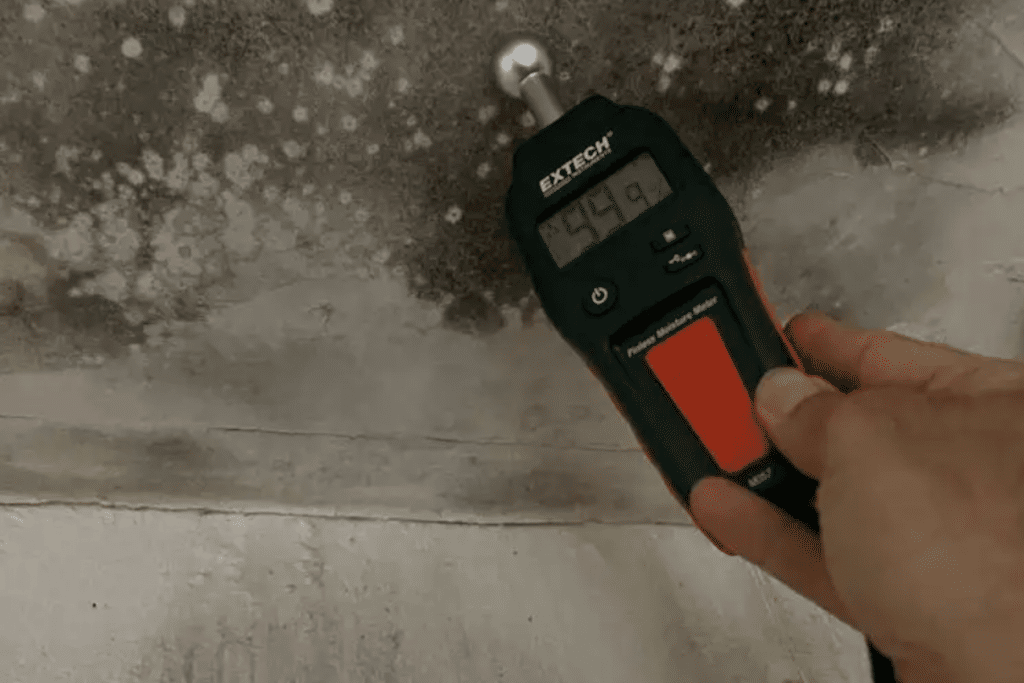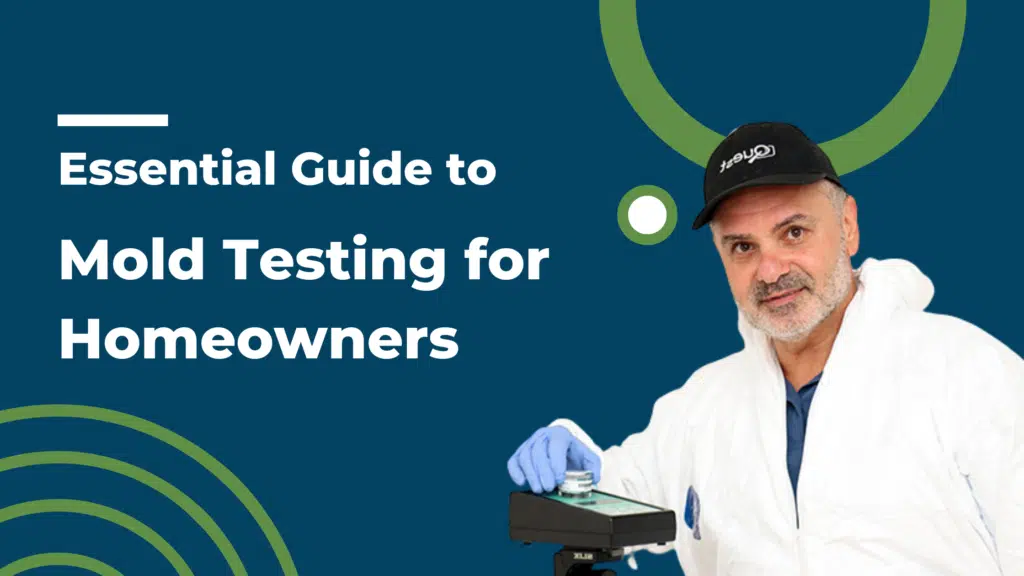Mold grows inside your house often out of sight. Molds may not always be visible, but they are there. It spreads through different means and can put your family’s health in danger.
It is such a sneaky one and many a time, the first you know of it, is when you are living with it. But how can you ensure that your home remains safe? The answer is mold testing.
While you are not the only one who’s worried about these health risk, this post will help you understand how mold testing can help you ion the long run.

What Is Mold Testing?
Mold sampling lets you figure out if mold spores are floating in your home’s air or sitting on surfaces. To check for these spores, you need to collect samples. This step plays a crucial role in spotting mold and gauging how serious the problem is.
Testing Methods:
- Surface Testing: Samples from colonies that are moldy in appearance are also collected.
- Air Testing: Detects airborne mold spore levels.
- Bulk Sampling: Scans walls made of drywall or a carpet for mold.
- Swab Testing: Its prime purpose is to determine the type of mold from the surface samples collected.
Mold testing assists in detecting early signs of hidden infestations, protects homes’ structural integrity, and is essential in keeping homes free from mould-associated problems that may harm health.
Why You Should Test for Mold Early
Early mold detection can save you time, money, and health risks. The longer mold is left unchecked, the more it spreads, causing expensive damage and potential health issues.
Why Early Testing Matters:
- Cost-Effective: Mold removal is cheaper when caught early. Delayed action can lead to extensive damage, costing thousands in repairs.
- Health Dangers: Mold can make you sick. It can cause breathing problems, allergies, and asthma attacks. Finding it helps you avoid getting sick over time.
- Quick Removal: Early testing ensures you get to deal with the problem before it spreads or causes permanent damage to your home.
How Mold Testing Works
From air samples to surface swabs, mold testing comes in various methods. Learn the most common techniques and how experts use them to get accurate results.
- Sampling: Samples are obtained using three techniques, air surface, and bulk.
- Lab Analysis: Tested samples are taken to a lab where the species of mold and the level of contamination can be determined.
- Results: A testing company delivers a report on all types of mold, their health risks, and recommendations on removal.
- Follow-Up: If mold is found, remediation steps to remove the problem and prevent its return are developed.
Signs Your Home May Have Mold
Mold can lurk in spots you can’t spot, so knowing the signs helps you catch it.
- Musty Smell: A lingering damp or earthy odor often signals hidden mold first.
- Water Damage: Marks, fading, or flaking paint can point to moisture buildup that mold loves.
- Visible Mold: You should check out any green black, or white patches on walls, ceilings, or floors.
- Health Problems: Constant coughing, sneezing, or eye irritation in certain rooms might point to mold growth.
- Too Much Moisture: High humidity or water drops on windows can turn into mold hotspots.
If you notice any of these signs, you should think about testing to find mold.
Health Dangers from Mold Exposure
Mold isn’t just annoying; it can endanger your health.
- Mold can worsen existing chronic respiratory conditions
- Folks with asthma, allergies, or a cough as well as those having trouble breathing, might face problems when they come into contact with mold spores.
- Mold-sensitive people might sneeze, get stuffy noses, and develop skin rashes.
- People who are sensitive to mold might start sneezing, get stuffy noses, and break out in skin rashes.
- Too much time around mold can cause headaches, dizziness, and fatigue.
Mold can cause fungal infections in folks with weak immune systems.
What to Do If You Find Mold
If your test reveals mold, don’t panic—you can tackle the issue.
- Check if mold covers everything or just a few spots. You can handle small areas yourself, but big problems might need expert help.
- For minor mold issues, use water and soap or a mold-killing product to clean surfaces. Always put on gloves and a mask.
- Open the windows and turn on fans to cut down on moisture and get the air moving in the affected area.
- Throw away things like drywall or carpet that you can’t clean .
- If mold covers more than 10 square feet, or if you’re not sure how bad it is, hire someone who knows how to get rid of mold .
Acting fast can stop more damage and keep you healthy!
Conclusion
Well, you are all now enlightened about mold testing in Long Island! In case you suspect that some molds are hiding in your home or you just want to keep everything cool, don’t hesitate. Get it tested! Quest Mold and Asbestos has got you covered through fast, reliable, and safe mold and asbestos testing. Contact us today so that your space will always remain fresh and healthy. Don’t let mold be the problem you did not see coming!


